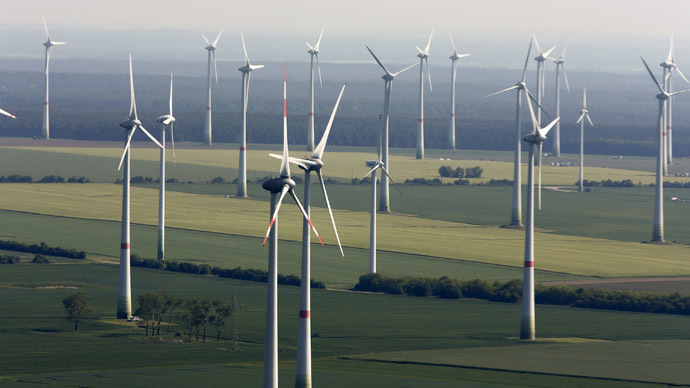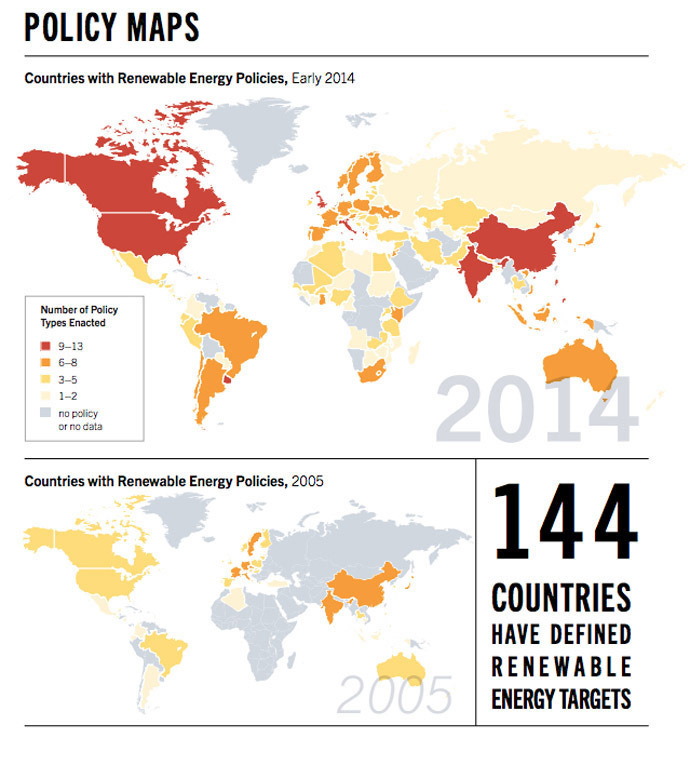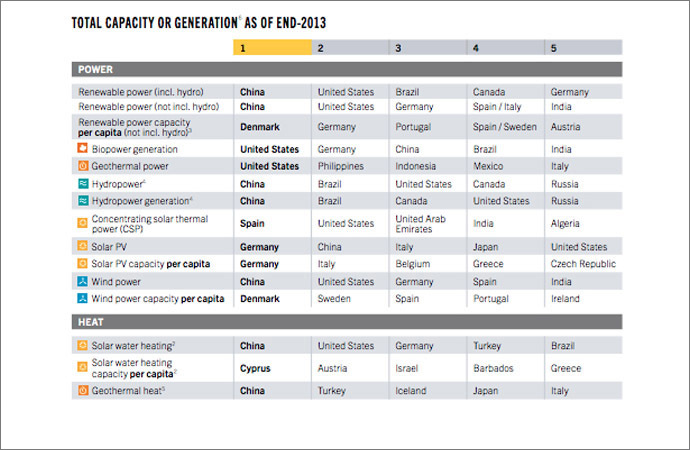Renewable energy initiatives up 10x in last decade

Support for renewable energy is growing worldwide and at the beginning of 2014, the governments of 144 countries have set renewable energy targets, almost a ten-fold increase since 2005 when only 15 countries had policies in place.
Emerging and developing economies are leading the way, with 95 of them having renewable energy policy plans, according to the Renewable 2014 Global Status Report.
The world generated 22.1 percent of its electricity from renewable sources in 2013, even though governments in the EU and US reduced their support. Renewable energy provides 6.5 million jobs worldwide, the report said.

China, the US, Brazil, Canada, and Germany are the top renewable power countries in 2013, with Spain, Italy, and India making huge strides, according to the report.
Denmark leads per capita power generation, and Uruguay, Mauritius, and Costa Rica were among the top investment locations.
The most significant growth is in power generation, as global capacity jumped 8 percent to more than 1,560 gigawatts (GW) in the last year. Hydropower rose by 4 percent to 1,000 GW, and overall renewables grew 17 percent to more than 560 GW.
Over 140 countries have adopted new renewable energy targets, including the United States, which has pledged to increase renewable energy capacity 50 percent by 2020. President Obama has promised to slash America’s dependence on coal, and to switch power plants towards cleaner energy.

However, it will be difficult for America to switch off coal consumption, as many states depend on it for their economic livelihood. Many lobbying groups are protesting the new clean energy act, saying it unfairly deprives local industries. Even though coal is a proven dirty energy source consumption has reached a 44-year high.
Attractive investment
Alternative and clean energy is no longer just a hip trend among environmentalists, but a real energy solution that provides power to homes and offices. The market has matured and become an attractive option for energy security.
Germany is pushing its economy towards renewables, and produces half of its electricity from solar power, The Local reports.
In Denmark wind power meets 33 percent of electricity demand, in Spain 20.9 percent, and in Italy solar power met 7. 8 percent of electricity needs. Many cities across the globe have a goal to transition to 100% renewable energy.

Over the last 5 years, solar power has on average expanded 55 percent per year, according to the report.
Clean energy is becoming cheaper and more popular with consumers, and investors are snapping up the opportunity. Elon Musk, the entrepreneur who invested early in PayPal and the Tesla electric car, has put money into solar power, and Google is weighing a move into the renewables sector.
Spain and Portugal sit on a bed of geothermal energy, but currently use none of it. Scientists from the Renewable Energy Journal estimate Spain has the potential to produce up to 700 GW, which is five times the current electricity power generation of Spain. The geothermal process is simple- capture heat from underground and use the steam to produce electricity.














